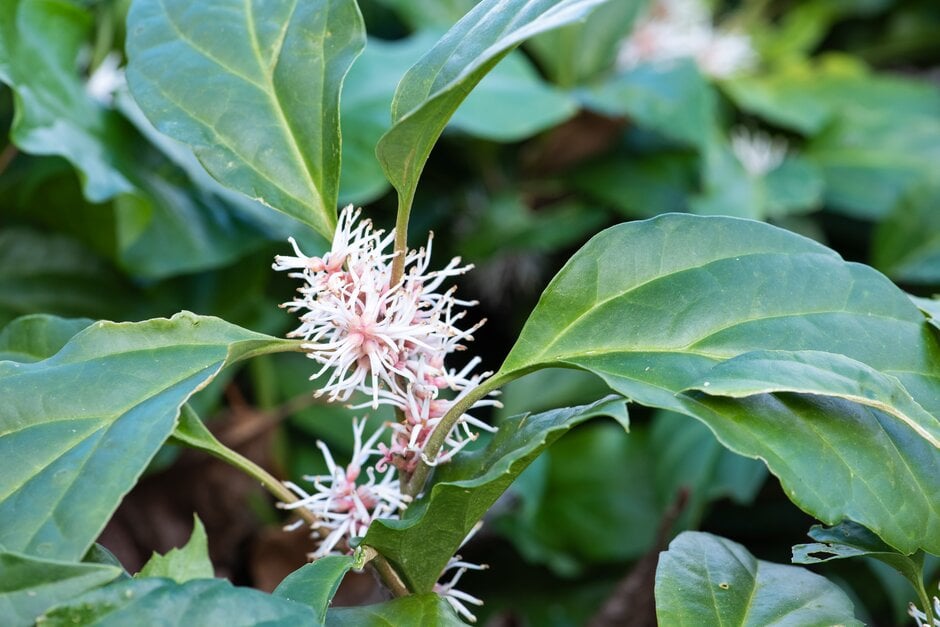Pachysandra axillaris
axillary pachysandra
A low-growing evergreen sub-shrub, 30-50cm high, with a creeping habit and glossy, coarsely toothed deep green leaves. Spikes of tiny white flowers are produced from the leaf axils in spring, followed by cream or reddish berries with distinctive horn-like styles

Buy this plant
Size
Ultimate height
0.1–0.5 metresTime to ultimate height
2–5 yearsUltimate spread
0.5–1 metresGrowing conditions
Moisture
Moist but well–drained, Well–drainedpH
Acid, Alkaline, NeutralColour & scent
| Stem | Flower | Foliage | Fruit | |
| Spring | White | Green | ||
|---|---|---|---|---|
| Summer | Green | |||
| Autumn | Green | White Pink Red | ||
| Winter | Green |
Position
- Full shade
- Partial shade
Aspect
East–facing or North–facing or West–facing
Exposure
Exposed or Sheltered Hardiness
H5Botanical details
- Family
- Buxaceae
- Native to GB / Ireland
- No
- Foliage
- Evergreen
- Habit
- Bushy, Spreading branched
- Genus
Pachysandra are mat-forming evergreen perennials or subshrubs with creeping stems and short upright branches bearing leathery leaves clustered at the tips, and erect spikes of small flowers, the males with prominent white stamens
- Name status
Correct
How to grow
Cultivation
Tolerant of all but very dry soils. Grow in full or part shade; a useful ground cover for shady corners or woodland
Propagation
Propagate by seed, by division in spring, or by softwood cuttings in early summer
Suggested planting locations and garden types
- Banks and slopes
- Ground cover
- Underplanting of roses and shrubs
Pruning
No pruning required
Pests
Diseases
Generally disease-free
Get involved
The Royal Horticultural Society is the UK’s leading gardening charity. We aim to enrich everyone’s life through plants, and make the UK a greener and more beautiful place.